40 Easy Things You Can Do to Stay Fit After 40

Your 20s were focused on your career, and then your 30s were focused on your family. So maybe it’s time to put yourself first and make this phase of your life all about you. Your 40s are the perfect time to start developing healthy habits that keep you feeling good for years to come. And prioritizing your goal of getting—and staying—physically fit is the perfect place to start. There are so many things you can do to get in better shape and improve your overall health—many of which don’t need to be difficult or cause you to feel overwhelmed. With that in mind, here are 40 easy ways to stay fit after 40.
1
Try a new exercise program.
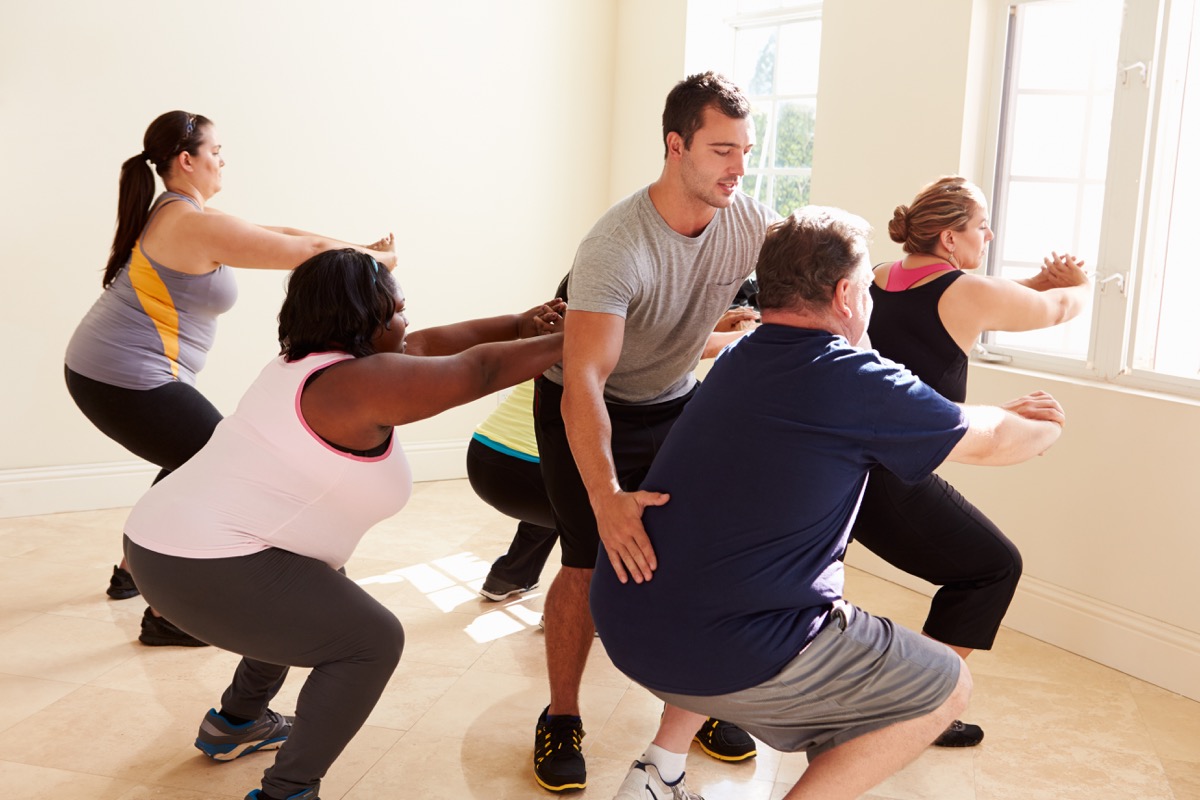
These days, the options are pretty much endless when it comes to your workouts. If you want to do something outside of the box, Neil Paulvin, DO, an integrated medicine physician in New York City, recommends trying “newer workouts, like ARX or Vasper.”
“[These workouts] help maximize both your time and the benefits you get from exercising,” Paulvin says. “There’s also the CAR.O.L. stationary bike, which gives you a great nine-minute workout that’s the equivalent of a 40-minute one!”
2
Or go back to the basics.

If you don’t know where to begin when it comes to working out, why not go back to basics? Instead of complicating your routine, keep things simple. Grab a jump rope for a cardio session, use light dumbbells to tone your arms, and stick to foundational toning exercises, like squats, push-ups, pull-ups, and sit-ups. You don’t need anything fancy to get in shape. These moves have been around for eons for one reason: They work.
3
But don’t look for a quick fix.
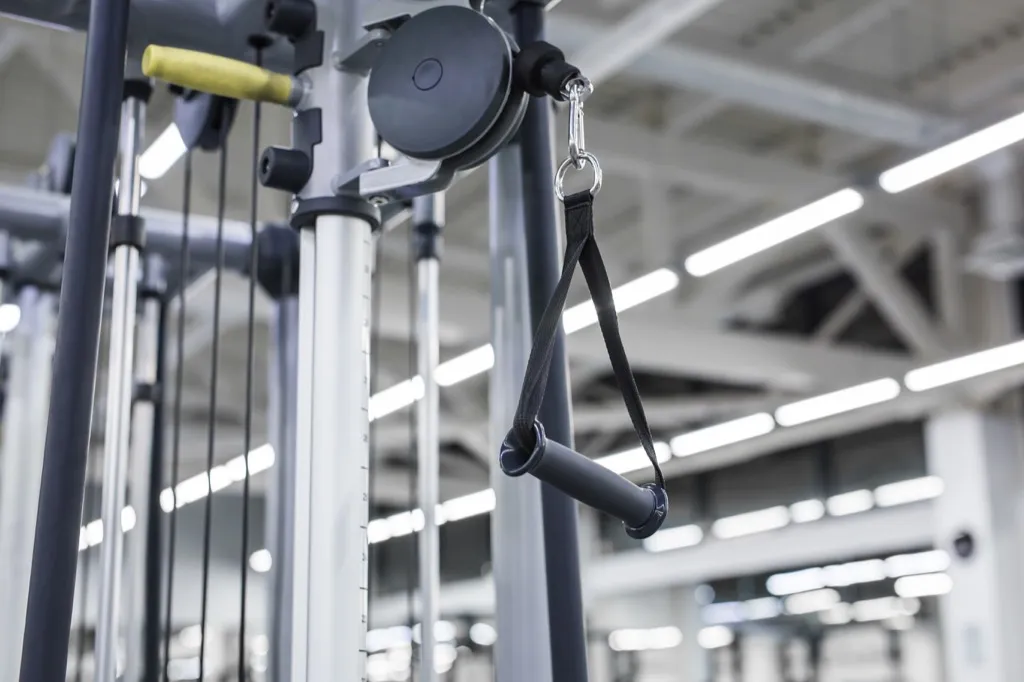
Don’t invest your hard-earned money into an exercise machine you spotted on a late-night infomercial that promises to have you looking toned in days or a supplement that can help you lose weight instantly. Take a second to think about it. Instead of draining your bank account on quick fixes that don’t even work, simply put in the time and effort it takes to see real, lasting change. If you work out and eat healthy, you’ll see results.
4
Take a walk during your lunch hour.

One easy way to stay fit throughout your 40s is to move more during the day. Instead of spending your lunch break sitting in front of your computer, take time away from technology and go on a walk. You’ll up your steps for the day and get rid of some stress. According to Harvard Medical School, all it takes is a quick 20-minute stroll to help clear your mind and make you feel like a million bucks.
5
Drink more water.
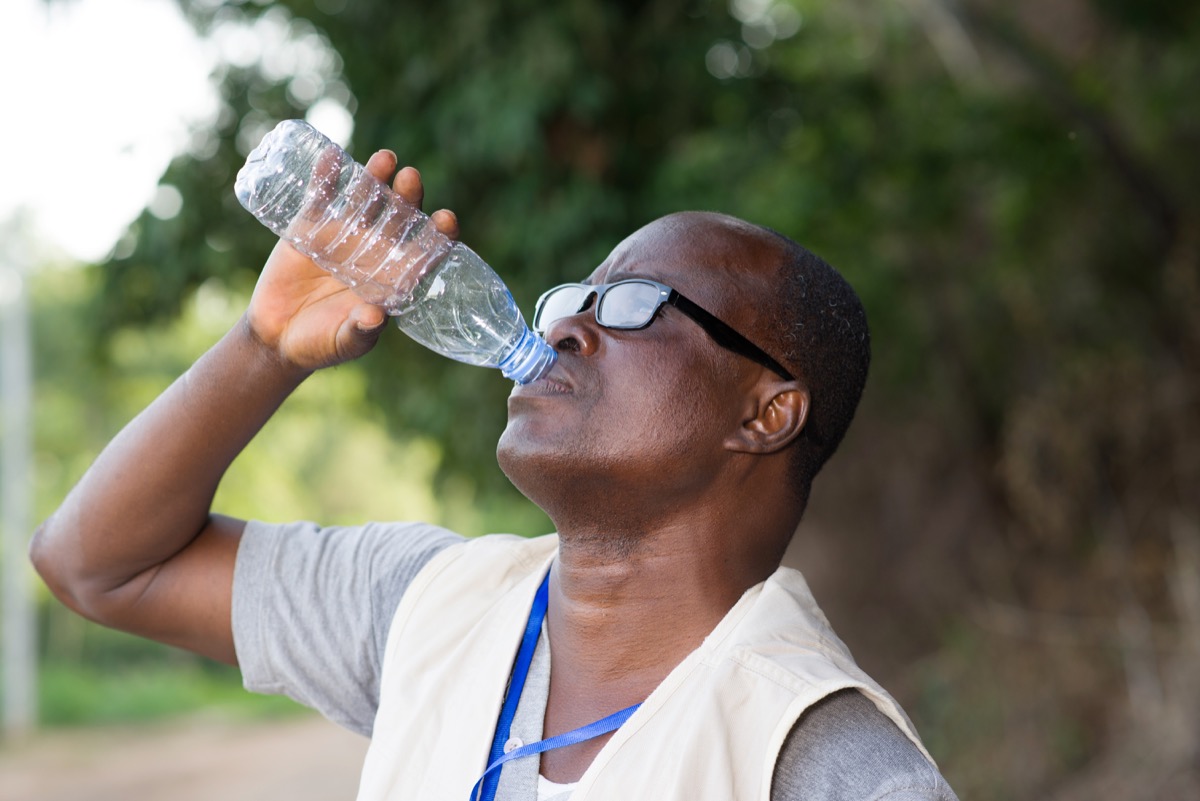
Water seems to take the backseat most days (especially when you have coffee on hand), but staying hydrated is just as important as eating a healthy diet. “Fueling your body properly and drinking plenty of water is crucial,” says Kelli Fierras, head trainer at EverybodyFights.
According to the Mayo Clinic, men should drink 3.7 liters a day, and women should drink 2.7 liters a day—more so if you’re working out regularly, in order to replenish lost fluids.
6
Commute by bike.
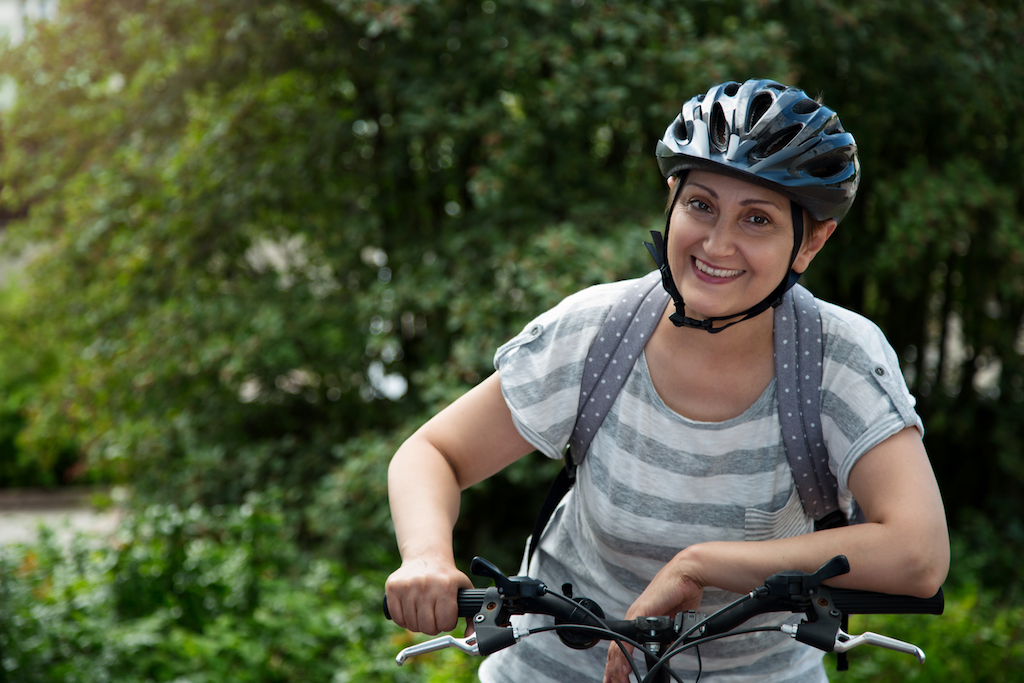
If you don’t live far from work, why not bike instead of drive? Not only does it reduce your carbon footprint, but it can also play a big role in helping you stay fit. A 2017 study published in the British Medical Journal found that biking to work was associated with a 41 percent lower risk of dying from any cause, a 46 percent lower risk of developing cardiovascular disease, and a 45 percent lower risk of developing cancer compared to those who drove or took public transportation.
7
Try fasting.
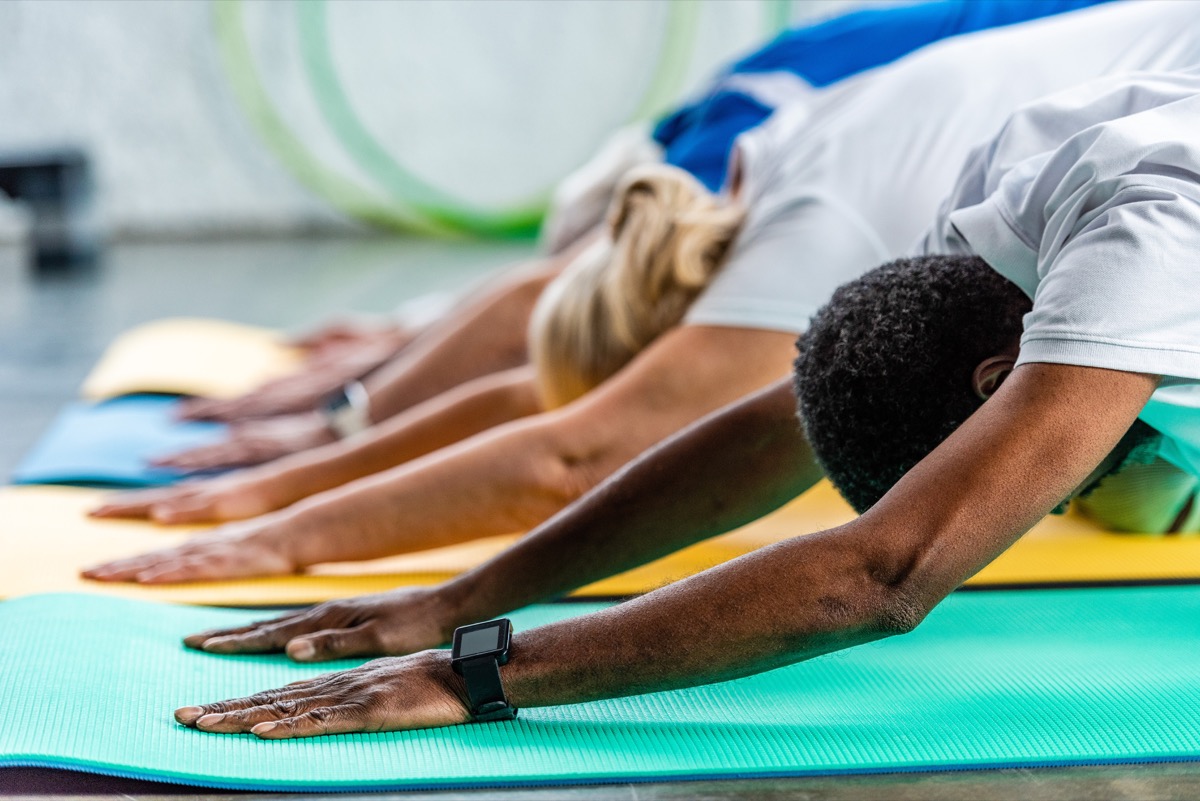
Exercising on an empty stomach could help bring on even more benefits than exercising after eating. “Try working out while fasting for at least 16 hours. Don’t worry: You can still drink water and black coffee,” Paulvin says. “Doing so can maximize your growth, help you lose weight, and help develop mitochondrion, which give your cells and muscle tissue energy.”
8
Consume a balanced diet.

Diet is just as important as exercise in staying fit—maybe more so. The Cleveland Clinic says that eating a balanced diet of healthy proteins, healthy fats, small amounts of carbs, fruits, and veggies plays a big role in your health and well-being. It gives you energy, allows you to keep up with your fitness routine, and helps fight off disease. Talk about a win-win-win!
9
Don’t overload on protein.
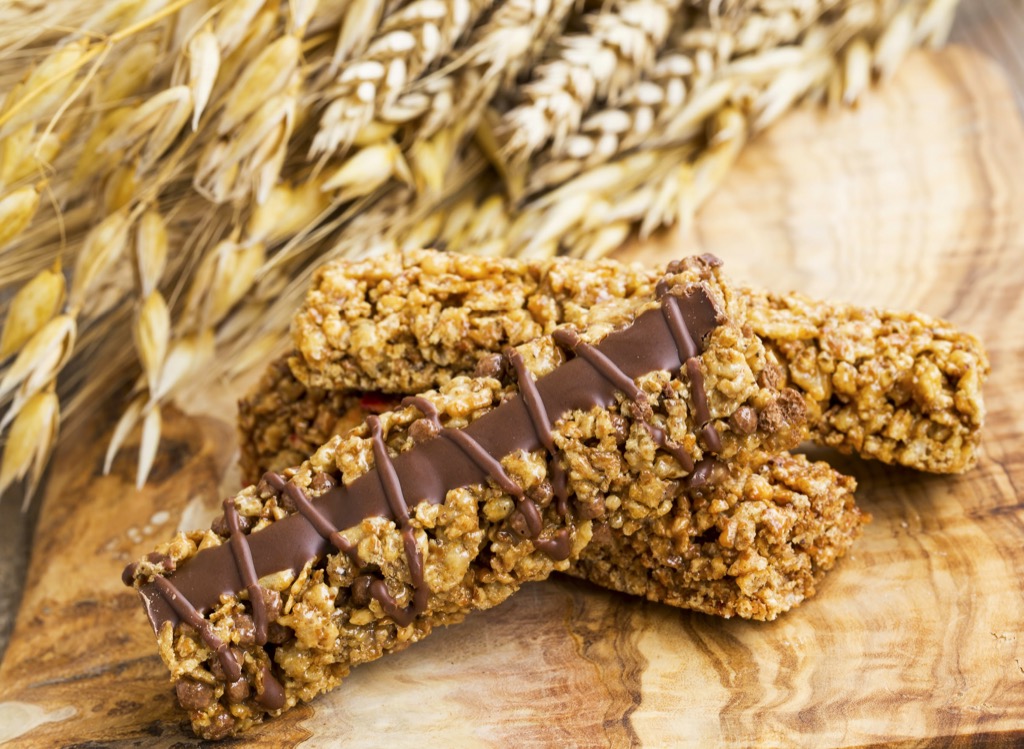
More protein means more muscles, right? Not so much. According to the Mayo Clinic, muscle growth comes from strength training—not eating extra protein. According The New York Times, most Americans actually eat twice as much protein as they’re supposed to a day, and since the body can’t store it, any extra protein either becomes fat or is used as energy. So maybe rethink those protein shakes and bars—you probably don’t need them, and they could be doing more harm than good.
10
Stick to a schedule.

When it comes to your workouts, your biggest priority should be sticking to a schedule. “When individuals are in their 40s, it can be common to lose muscle mass, and it can be more challenging to preserve lean muscle mass,” says Fierras. “That’s why it’s important to plan a consistent exercise regimen that works for you. Write down your plan as if you were planning for your work week.”
11
Focus on flexibility.

If you’re not very limber, now’s the time to start working on it. “As you age, it can be challenging to stay flexible,” says Fierras, who recommends 10 to 15 minutes of stretching each day to decrease your risk of injury. “Two things that will help are introducing yourself to a foam roller and doing yoga.” Plus, sweating it out with yoga is a double-whammy: It can count as your daily workout, too!
12
Don’t compare yourself to other people.
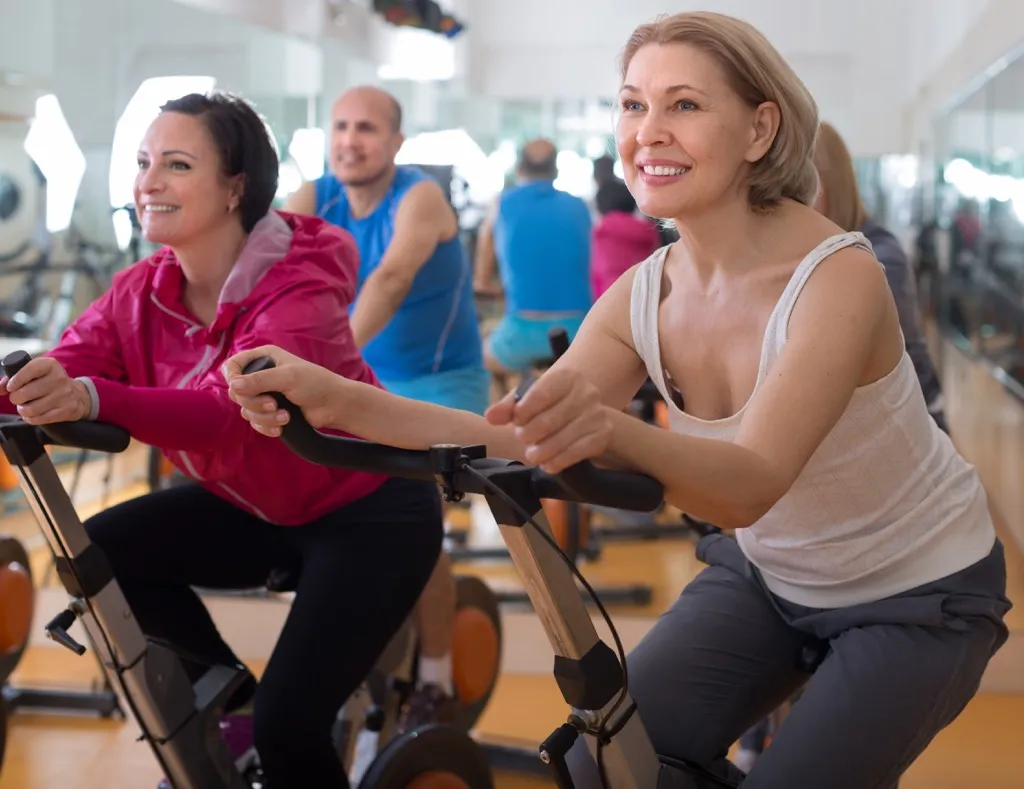
If the fitness influencers you’re following on Instagram don’t inspire you—or, worse, make you feel bad—unfollow them. One mistake people make in their attempts to get fit is focusing on other people’s journeys more than their own. Instead of sulking and wishing you were further along than you are, keep working toward your goals. Don’t picture someone else as your driving force—envision a better version of yourself. That’s the only thing you should be striving toward!
13
Practice good gut health.
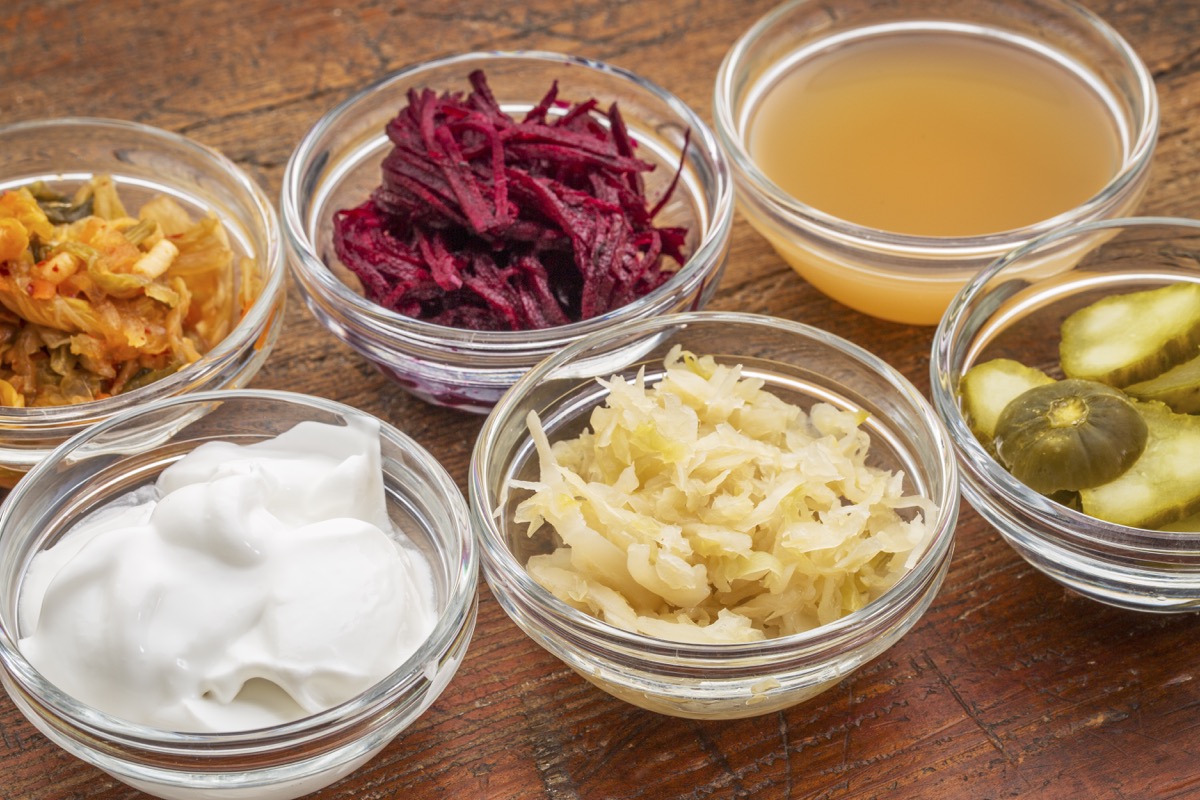
If you want to stay as fit as possible after 40, one of the first things to address is your gut health. “Your gut is damaged by antibiotics, stress, and fast food,” Paulvin says. “You can heal your gut through probiotics, glutamine, and other supplements. Time-restricted eating—basically, eating at the same time every day—can also help.”
14
Keep a positive attitude.
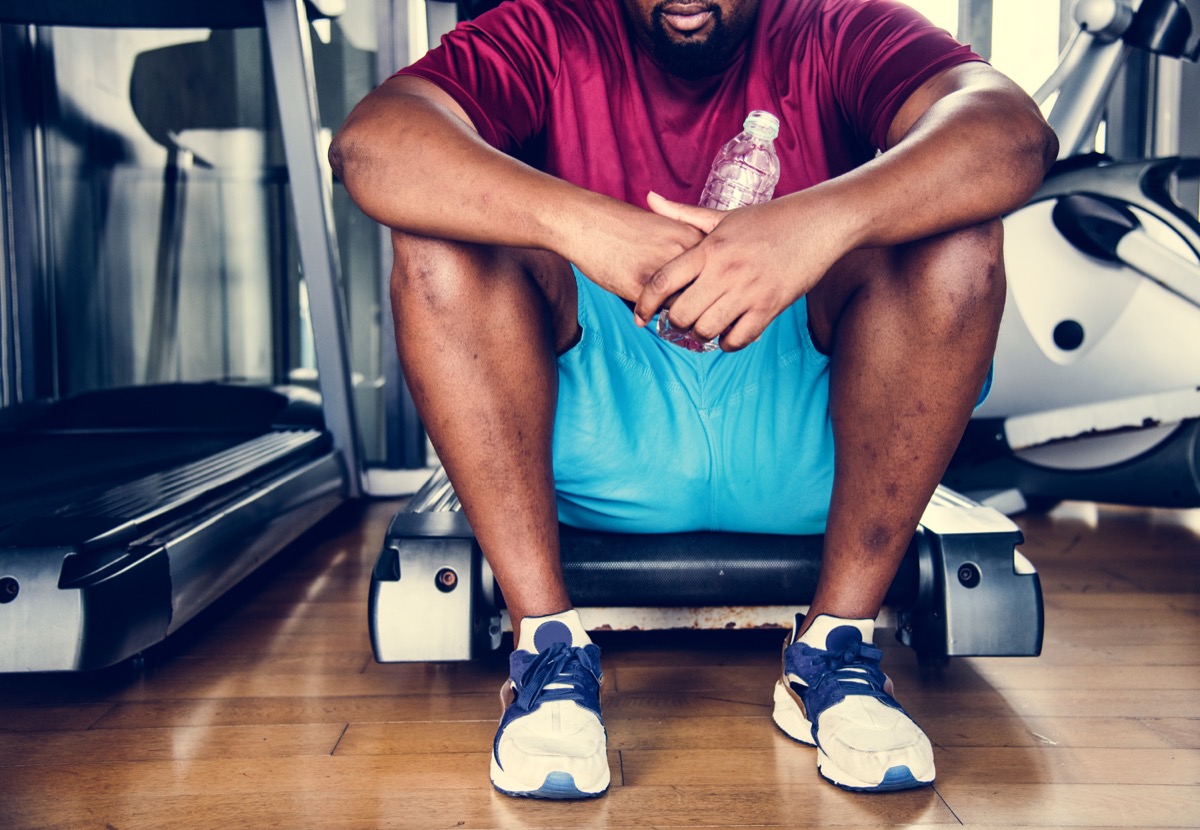
It’s easy to get discouraged while trying to get fit in your 40s—especially if you haven’t been successful with the mission in the past. But the only way you will find success this time around is by staying positive.
“If you have the mindset that getting or staying in shape after 40 is impossible, break it,” says Michael James, a trainer at EverybodyFights. “Trust me—I’ve seen serious changes in every single one of my 40-something clients, and you can make changes, too.”
15
Don’t obsess about what you see on the scale.
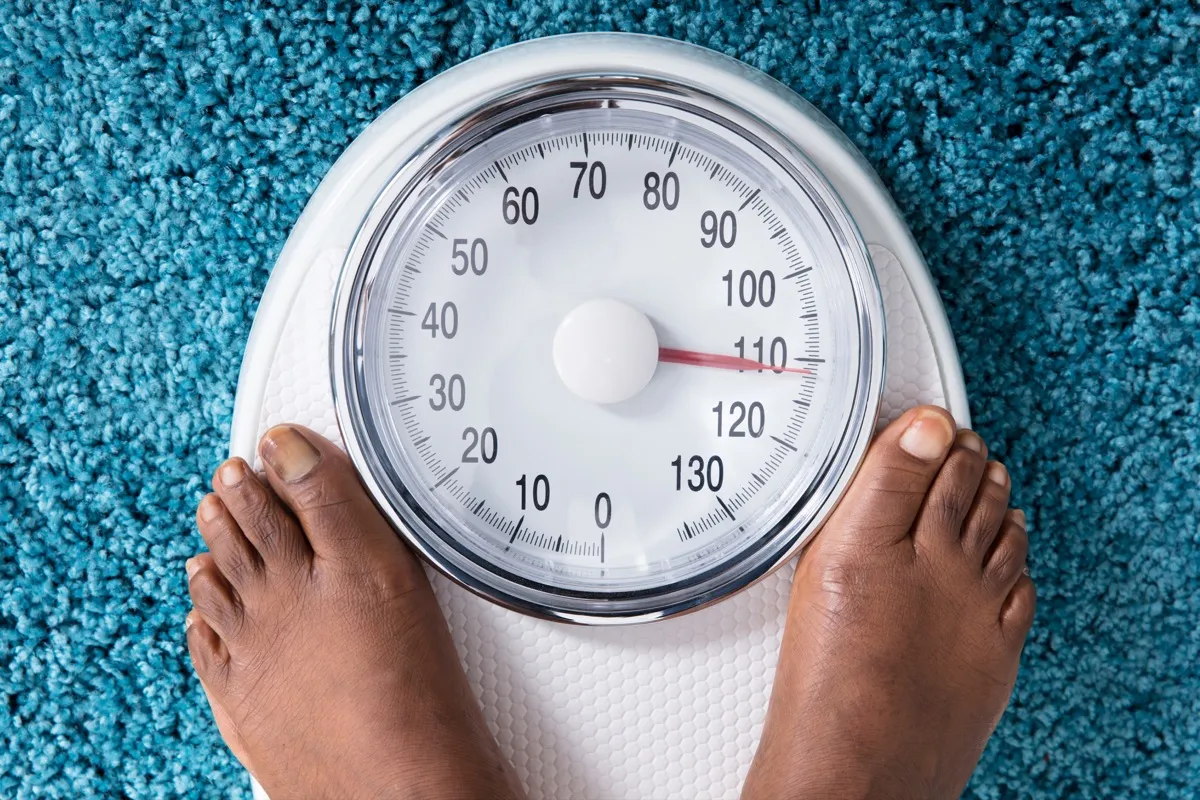
If being fit has revolved around the scale your entire life, get that thing out of your home immediately. It’s probably doing more harm than good. “People tend to obsess over the scale, but that only tells you one number. It doesn’t show your body fat percentage or lean muscle mass, which are much more important,” James says. “Think about how you feel—and how your clothes fit—instead.”
16
Make use of online exercise programs.
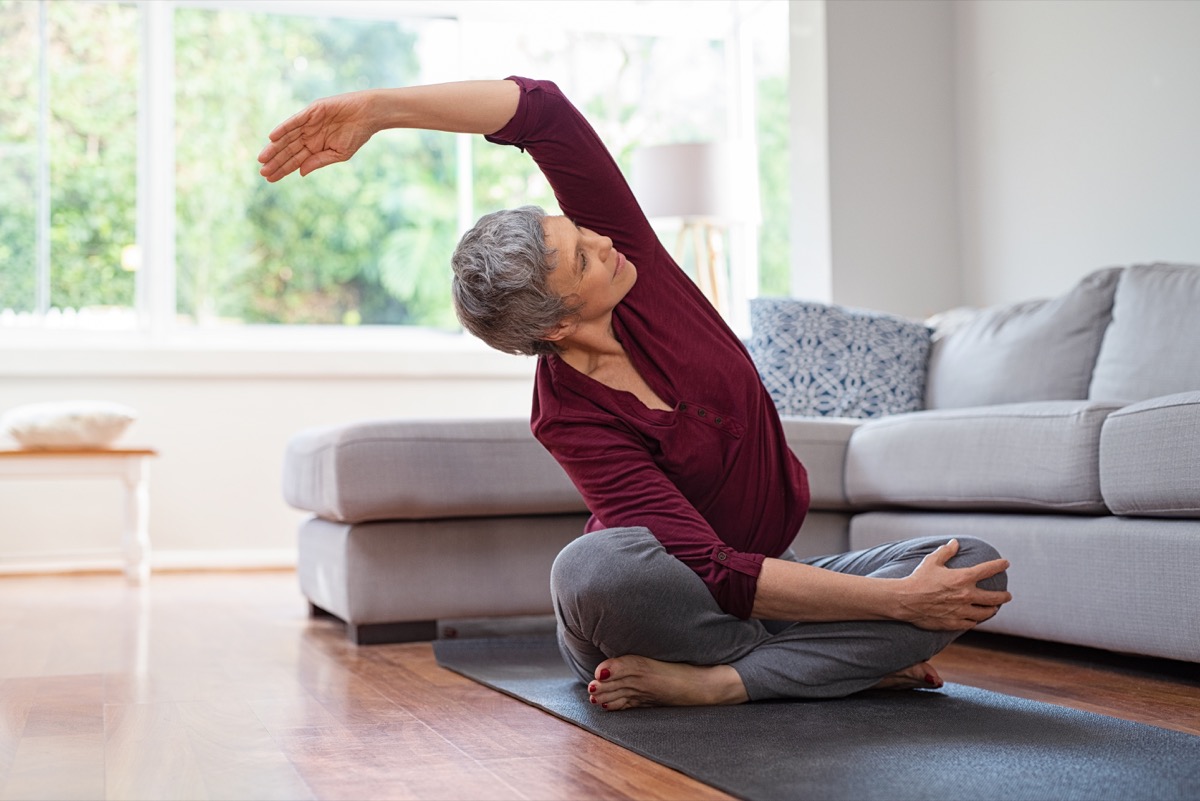
Nowadays you can up your fitness level right in the comfort of your living room. There are so many different types of workout subscription programs available online. No matter what you like to do—yoga, Pilates, cycling, etc.—you can find a way to exercise whenever and wherever you want. Plus, most programs cost a fraction of the price of a gym or studio membership.
17
Know that something is better than nothing.
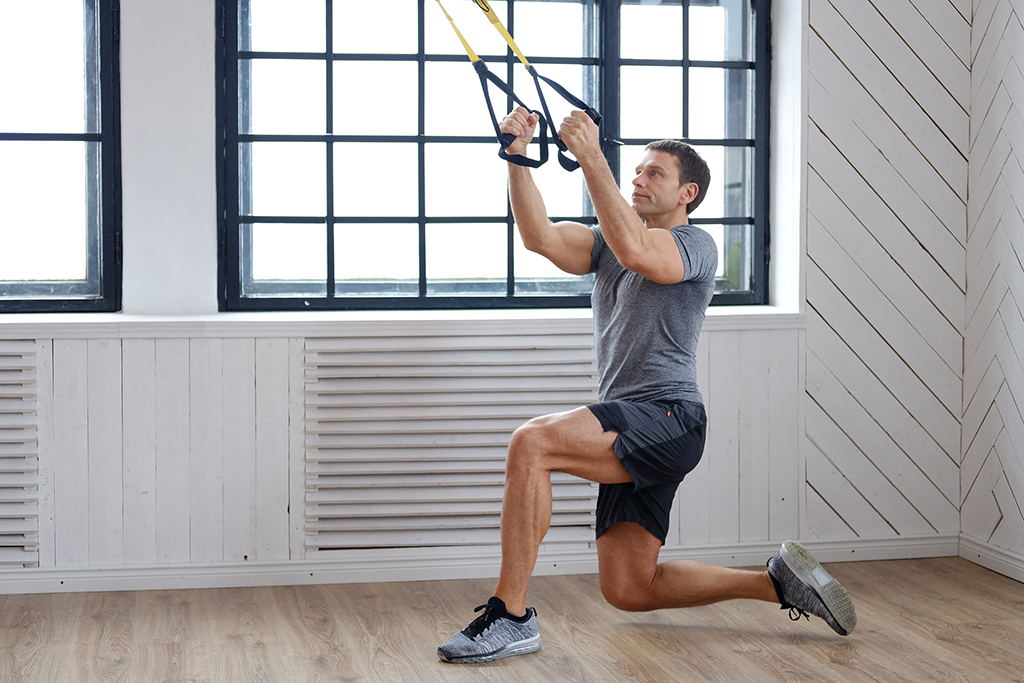
If you’re very busy one day and don’t have time to head to the gym or do a full-on workout, don’t just plop on the couch.
“Something is always better than nothing,” Fierras says. “Find 10 minutes to do a quick, effective workout, even if that simply means a handful of bodyweight exercises, like pushups, squats, and dips.”
18
Make use of cutting-edge recovery technology.

The ways you can help your body properly and quickly after a workout have grown in number and gotten far more advanced in recent years. “You can use recovery tech to help work out more effectively and recover faster,” Paulvin says. “Halo Neuroscience works on certain areas of the brain to increase athletic performance, and equipment such as light therapy and Pulsed Electromagnetic Field therapy (PEMF) can help your body heal faster.” Even cryotherapy—which is more mainstream—has been shown to aid in helping with sore muscles. Check to see if there are any fitness or wellness centers in your area that offer treatments.
19
Switch up your routine.
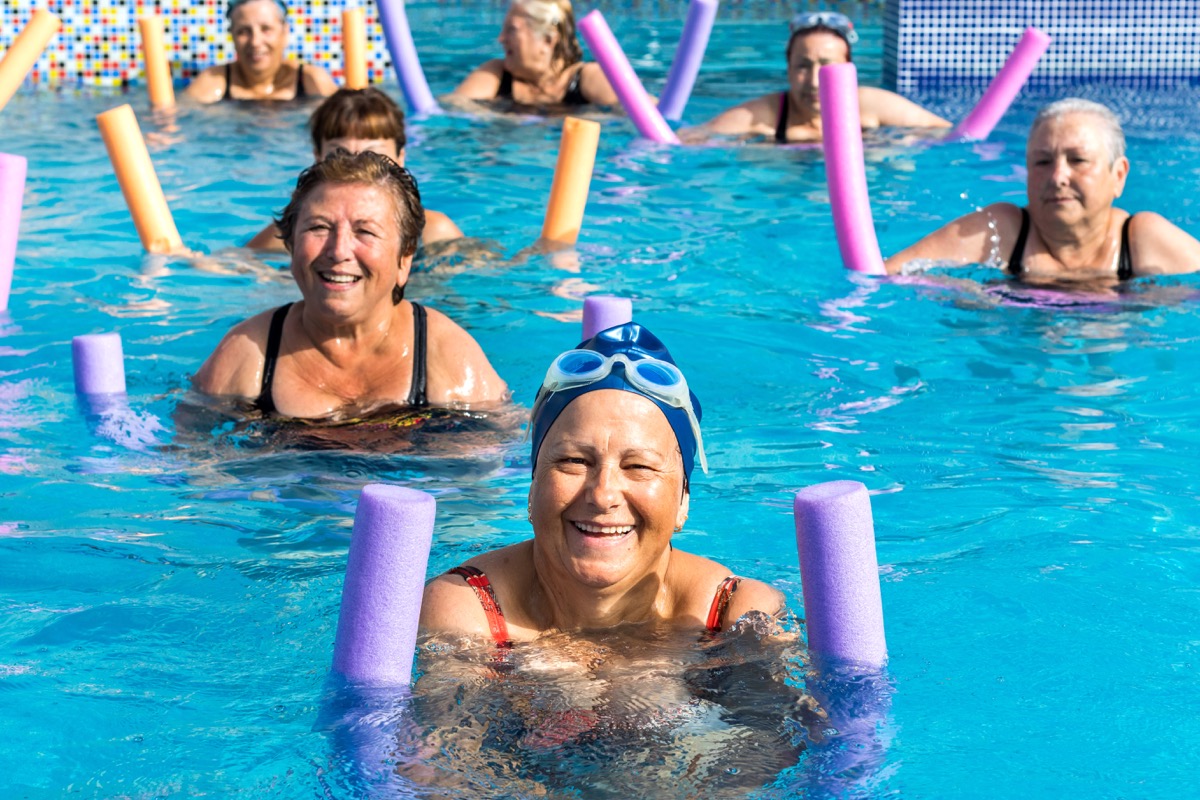
If you’ve been doing the same workout your entire life, try switching things up. “Your 40s is a great time to change up your workout routine and learn a new skill. Decades of the same workout can put excess stress on your ligaments, cause muscular imbalances in the body, and can be boring,” James says. “Try out something new. Some of my clients’ favorites are HIIT classes, boxing, swimming, and stand-up paddle boarding.”
20
Reward yourself.

If you’ve been keeping up with your workout schedule, why not give yourself a reward for that dedication? For every, say, week you don’t skip a workout—or whatever time frame works for you—treat yourself to something you love, whether that’s a trip to the spa or dinner at a fancy restaurant. When you have something to look forward to, you’ll be excited to push yourself toward that goal every day.
21
If if hurts, don’t do it.

No pain, no gain…right? Well, not necessarily. Feeling the burn during a workout because of how hard your muscles are working is definitely different than experiencing pain. “It’s so important to listen to your body while exercising,” Fierras says. “If it hurts, stop what you’re doing immediately.” If you push through the pain, you could set yourself up for an injury—potentially one that could keep you from working out for weeks.
22
Have your hormone levels checked.
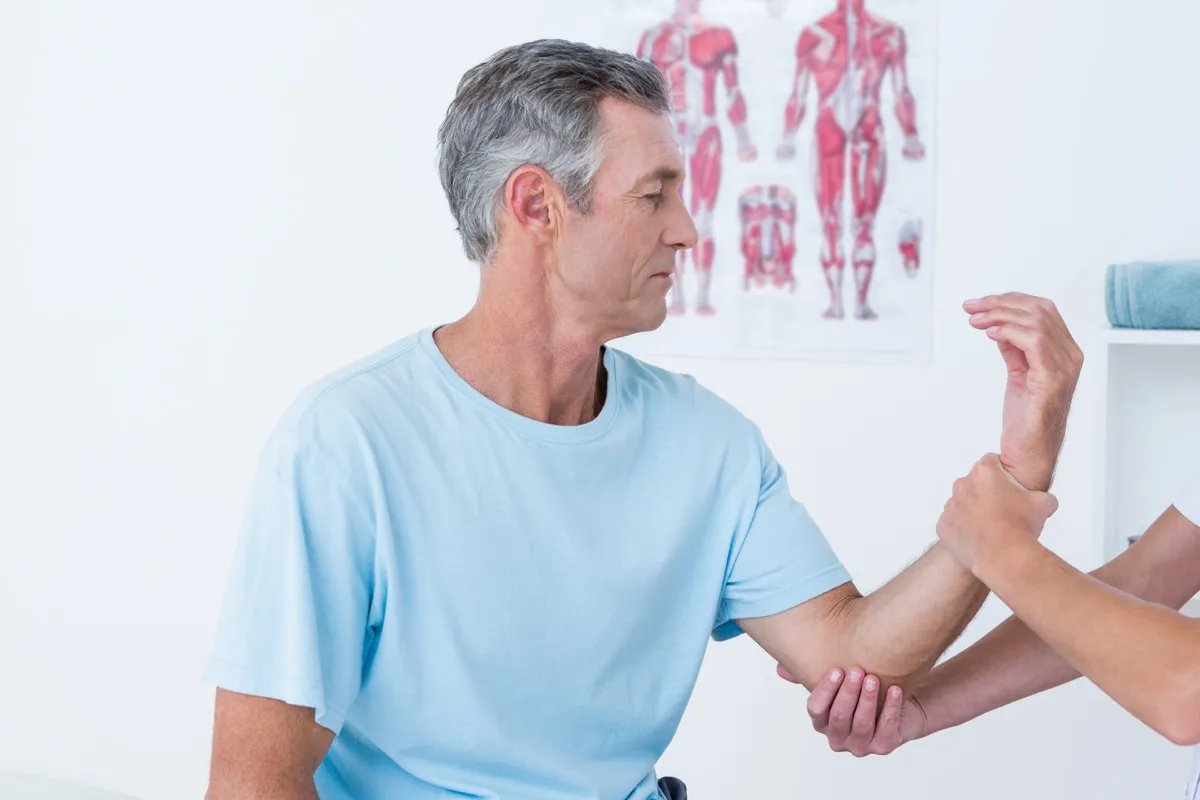
In your 40s, it’s important to get some tests done by your doctor to make sure you remain as healthy as possible throughout the years to come. “You should at least know your testosterone, fasting insulin, and cortisol [levels],” Paulvin says. “Testosterone helps build muscle, develop bone, and helps with brain function. If your insulin is high, you’re not going to lose weight as easily, and may have problems gaining muscle. And problems with cortisol can affect sleep.” Once you get your levels in check, your health and well-being will benefit on multiple levels.
23
Strength train.
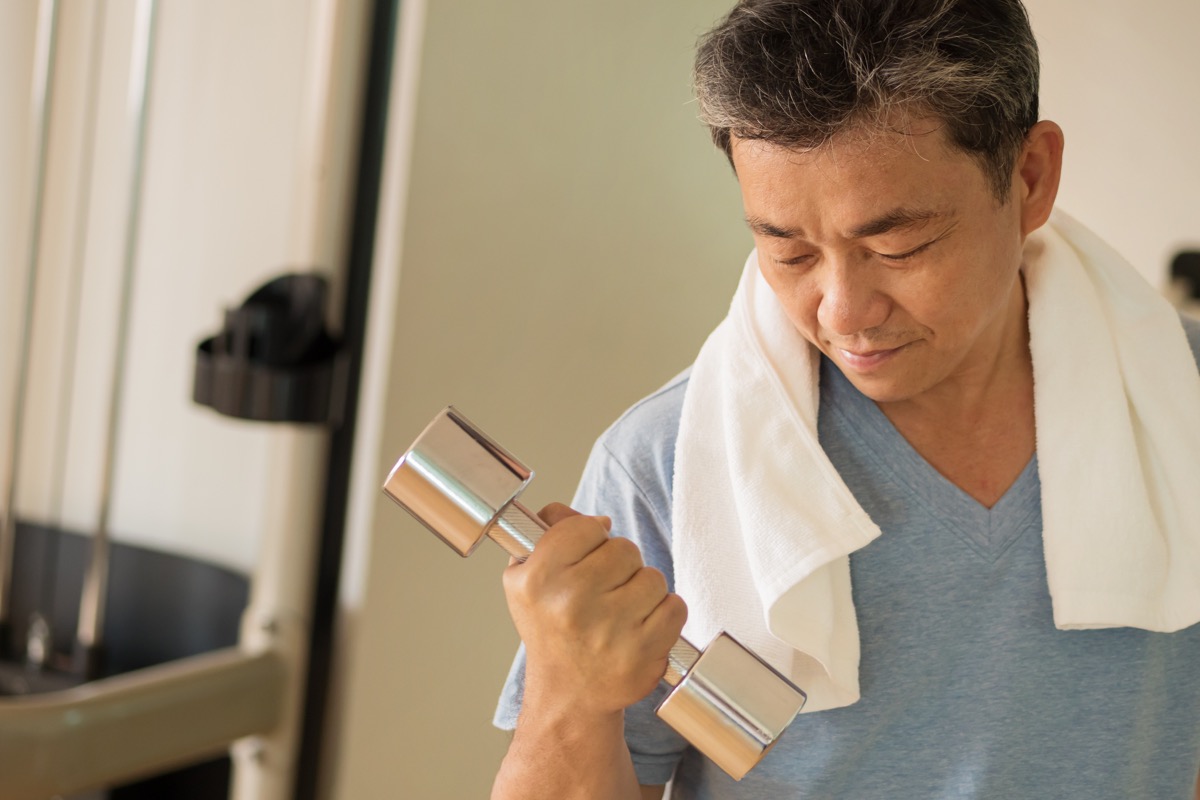
Since you lose muscle mass as you age, the Cleveland Clinic recommends doing strength training at least two times per week on nonconsecutive days. Lifting dumbbells or using resistance bands helps create and restore your muscle mass. These exercises also help boost your resting metabolism, too—which can help you stay fit in the long run.
24
Get enough sleep.

Don’t cut yourself short in the sleep department. According to the National Heart, Lung, and Blood Institute, getting enough sleep each night is crucial in protecting your mental health, physical health, and overall quality of life—especially in your 40s and beyond. If you don’t get enough sleep, it could even increase your risk of heart disease, diabetes, and stroke; make you feel hungry when you’re not; and cause your energy levels to plummet.
25
Give red light therapy a go.

If you have access to a red light therapy pod in your area, it could soon become your favorite way to recover between workouts.
“Laying in the red light therapy pod for 15 minutes two to three times a week delivers deep healing of your muscles, tissues, tendons, and joints, all while reducing oxidative stress and fatigue from your workouts,” says Marsha Dirks Prada, DC, a chiropractic specialist and co-owner of Denver Sports Recovery.
26
Try blood-flow restriction training.
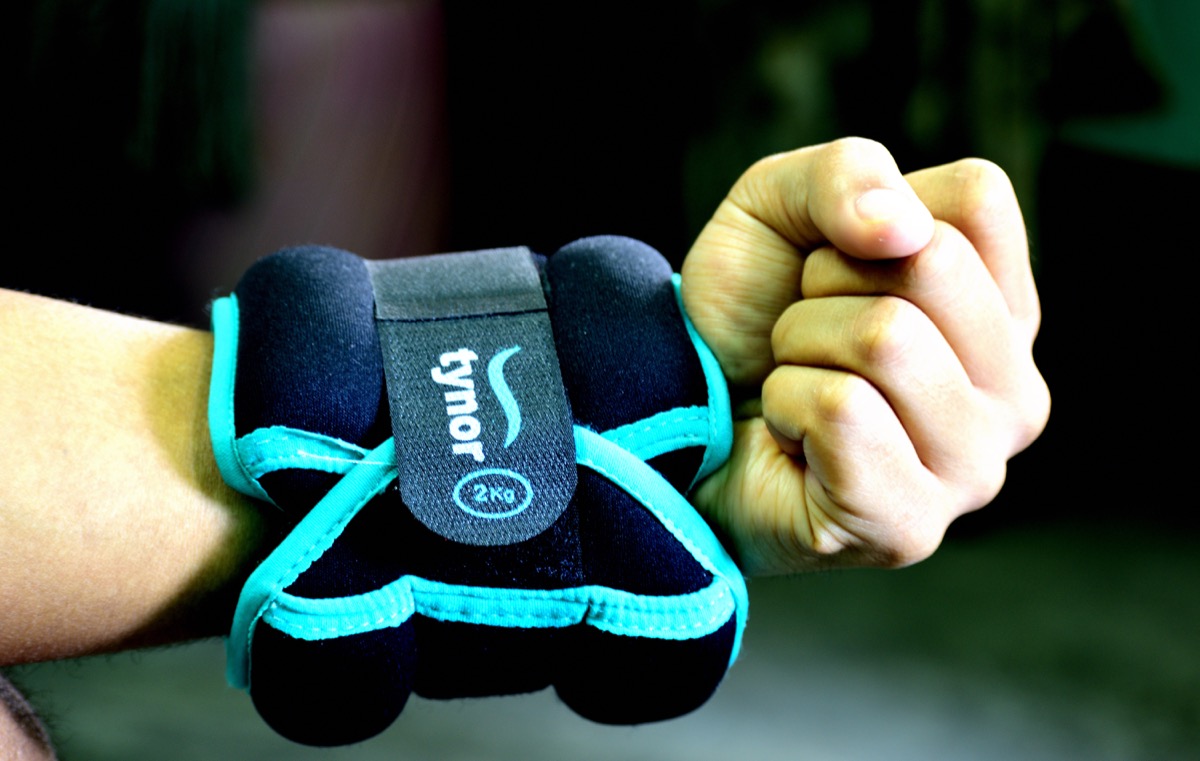
If you haven’t heard of blood-flow restriction training, you’re not alone. Relatively new in the fitness world, it involves wearing high-end pressure cuffs or bands on your limbs while lifting weights—and it’s endorsed by science.
“Cutting off oxygen to certain muscles will increase certain hormones to help build muscle with much lower weight and less time spent working out,” Paulvin says. Work with a trainer to get started to ensure you’re using the method properly.
27
Change your perspective on exercise.
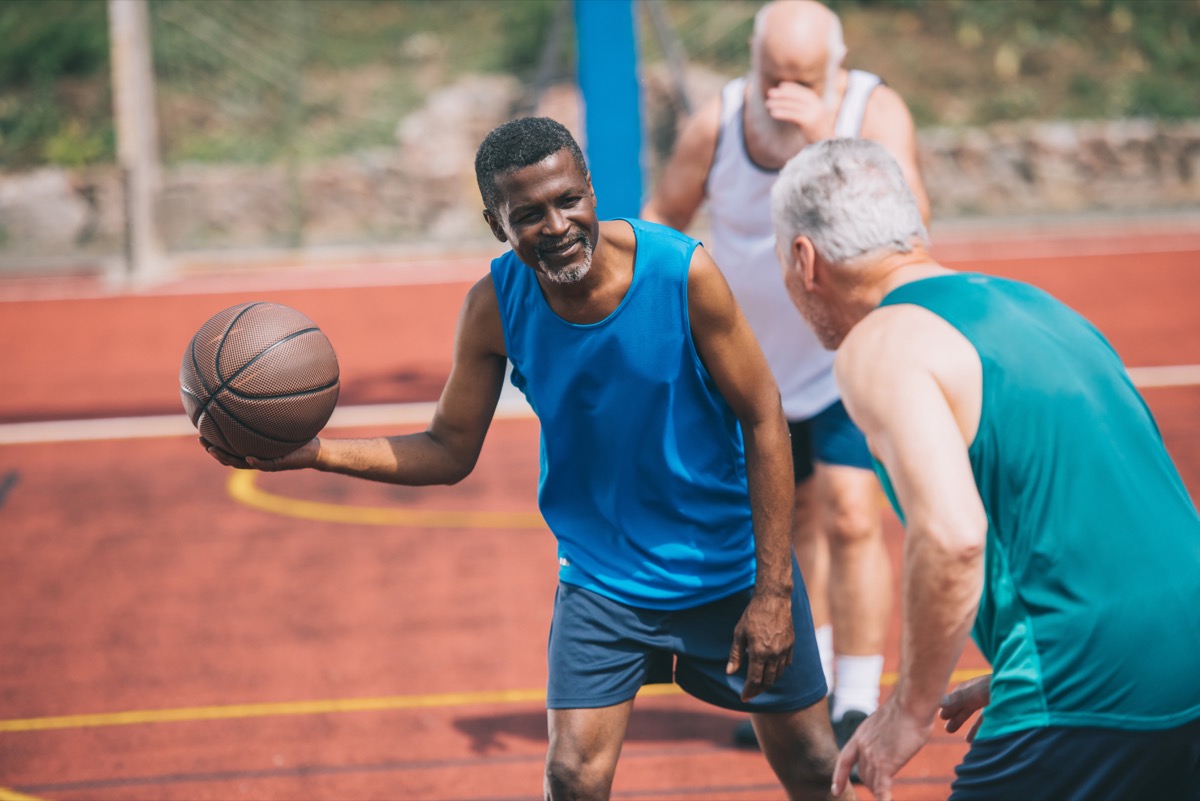
One of the main reasons so many people don’t want to exercise is because they see it as a chore. Instead of dreading it, find something you look forward to and enjoy doing every day. That might mean changing your idea of what exercise is. Instead of only thinking you’ll get fit through high-intensity interval training or sweat-inducing cycling classes, focus more on mood-boosting, low-impact activities like hiking and yoga.
28
Create a sustainable program.
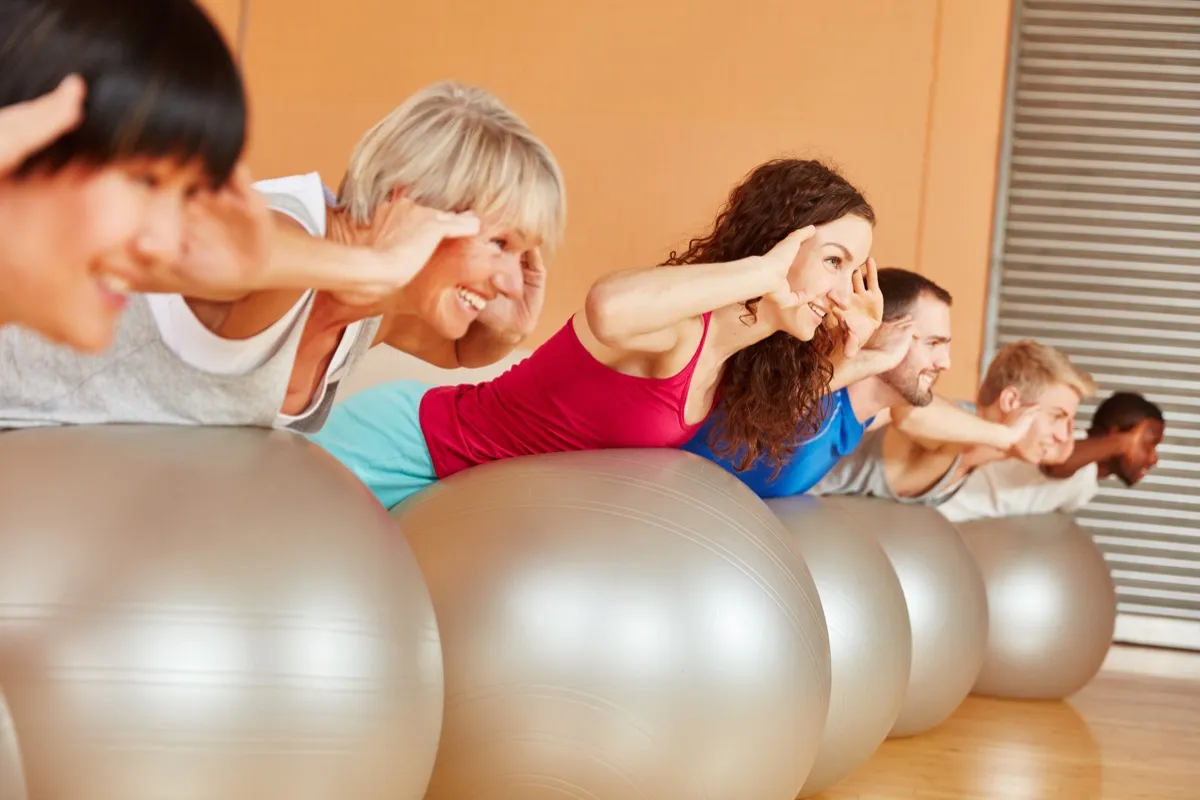
Starting up a workout program not only gives you a schedule of what to do every day, but it also keeps you accountable and motivated. “Find a program that works for you, whether it’s a couch-to-5k program, workout app, group fitness class, or a workout your trainer put together for you,” Fierras says. Once you get in the habit of training every day, it will become something you love and really look forward to doing.
29
But don’t be afraid to modify.
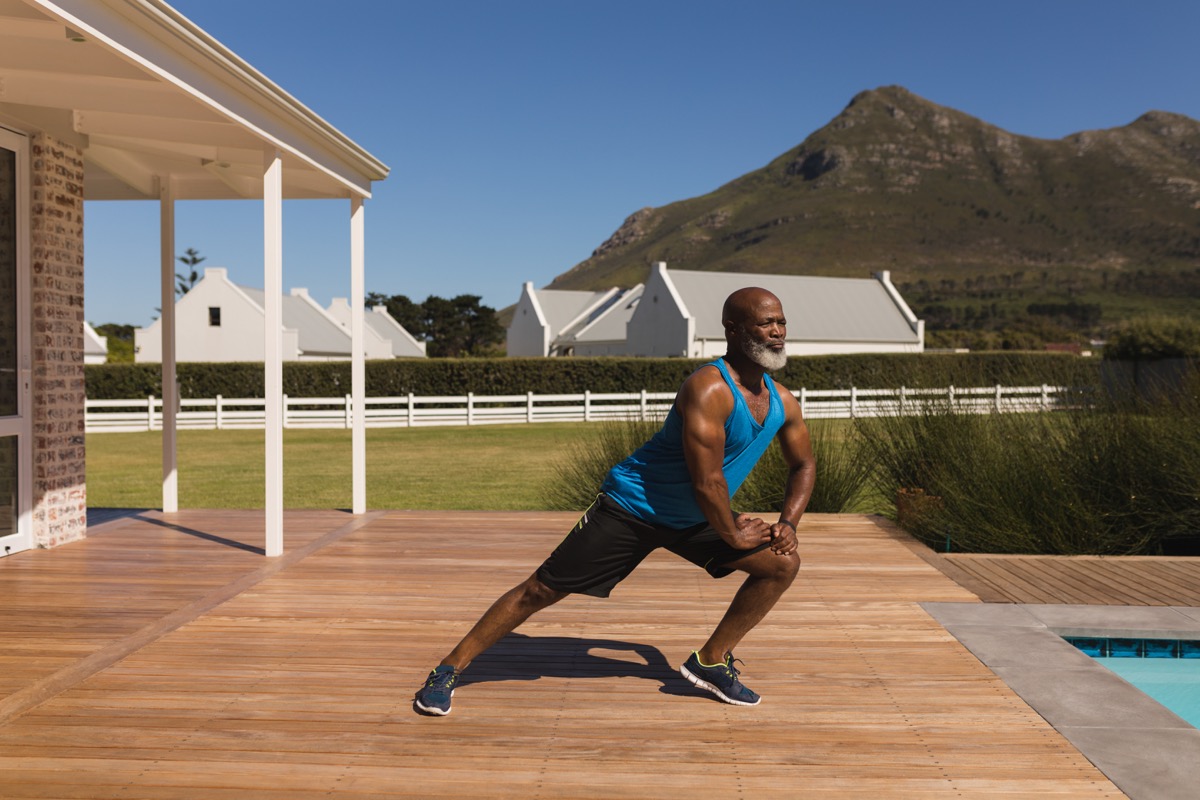
Some workout programs have you doing burpees, jump squats, and other intense moves that your body might not be able to handle once you’re in your 40s—well, not yet, anyway. There are plenty of ways you can modify different exercises that still bring on the benefits without the potential for burnout or injury.
30
Don’t push yourself too hard.
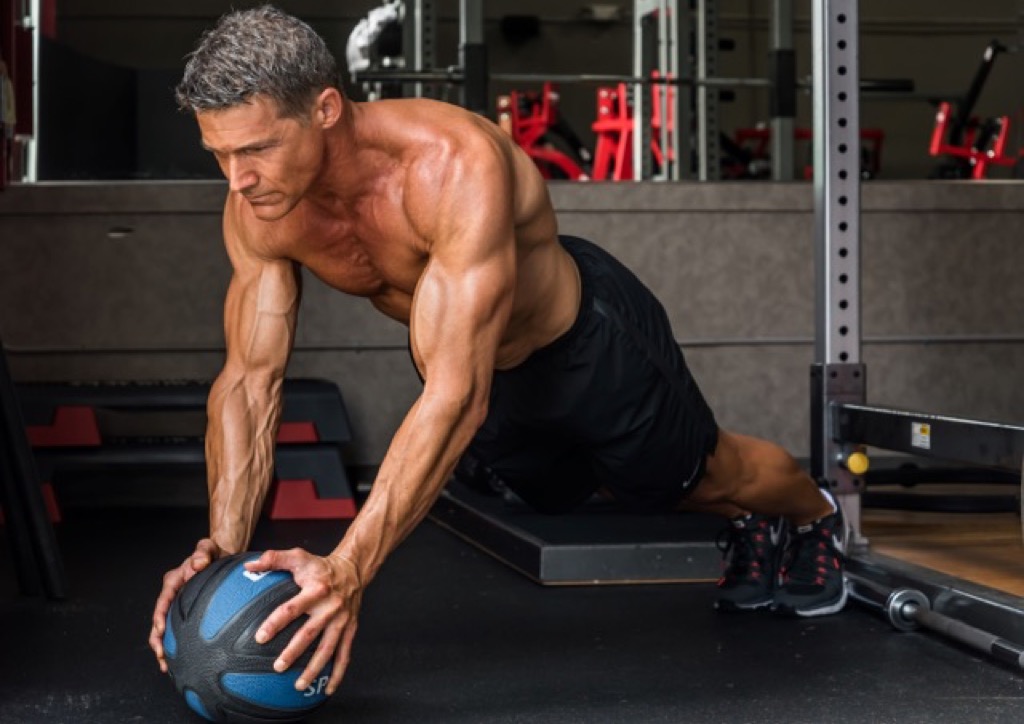
If you don’t feel ready to tackle heavier weights or more difficult movements, don’t! Overdoing it can only ultimately set you back if you end up hurting yourself or burning out. It’s best to stick to what’s working for you.
31
Don’t only focus on cardio.
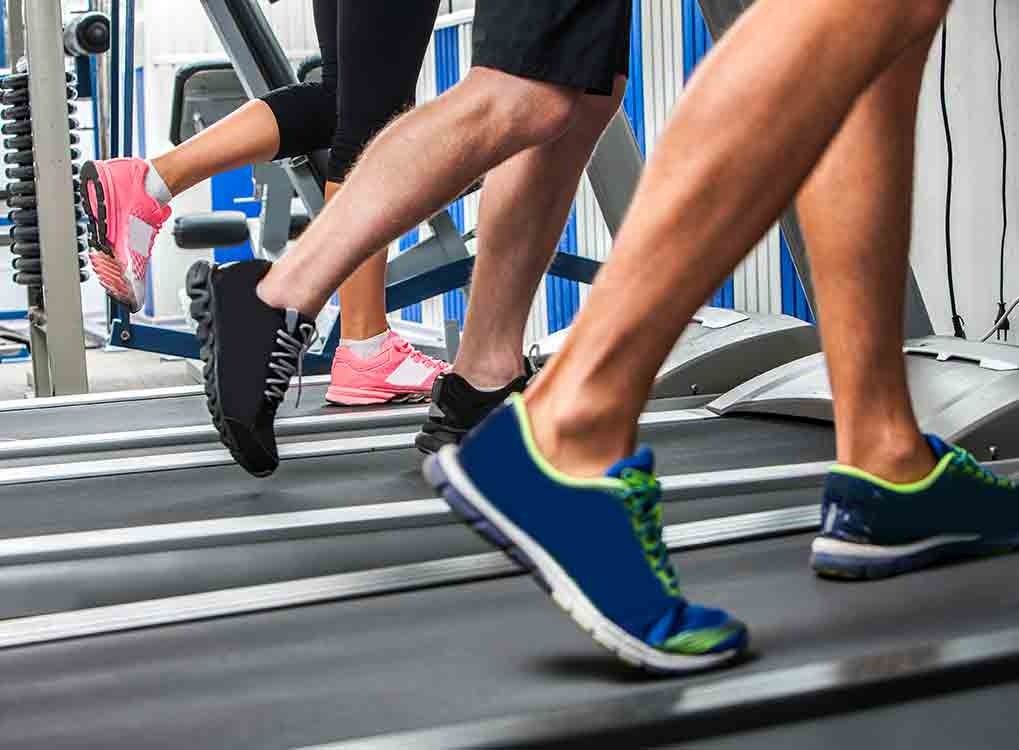
Basing your workouts almost entirely on cardio is only going to get you so far. For balanced workouts, James recommends incorporating other forms of training. One of his top picks? Starting to use weights—even small ones—which is how the majority of his clients really start to notice changes in their bodies, he says.
32
Meditate regularly.
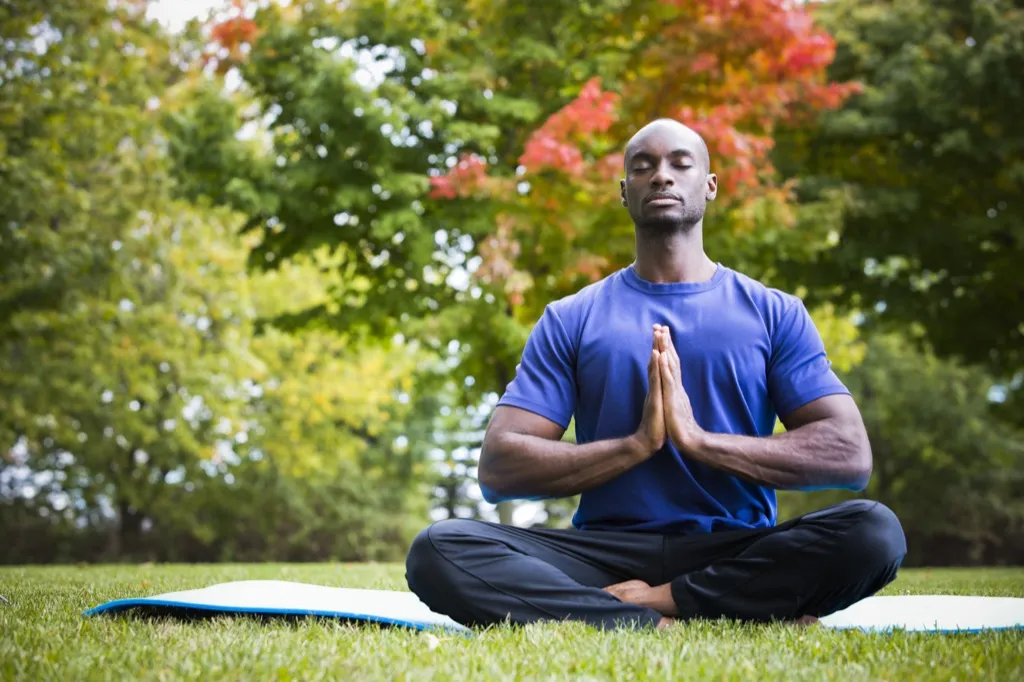
Sometimes staying fit doesn’t involve moving at all. According to 2014 research published in JAMA Internal Medicine, dedicating yourself to a daily meditation practice can do wonders for your health—helping manage stress, anxiety, depression, and pain. There are numerous free apps that can help you get started, and all you need is a few minutes a day to start feeling its effects.
33
Put down your phone.

How many times have you taken a five-minute break between exercises, just to scroll through social media or catch up on texts and emails? When you’re working out, make every minute about working toward your goals—not about what everyone else is up to. After a set of push-ups, do a one-minute plank. Between sets of squats, do a series of 30-second hamstring stretches.
34
And watch less television.

Coming home after work and immediately turning on the TV always sounds nice and soothing. Your Netflix queue isn’t growing any smaller, after all. Instead of more sitting—after probably sitting all day at work—take time to go on a walk with your dog before dinner or do some stretching. Anything that gets you moving for just a little bit longer than usual will benefit your health.
35
Find a workout buddy.

If you’re looking for a way to stay accountable for your workouts everyday, look no further than a fellow fitness-loving friend—that might even mean making a new one at the gym. “Motivation is the key to success,” Fierras says. “Find a workout buddy or someone to keep you active and engaged with your workouts.”
36
Eat more plant-based foods.

The world is going more plant-based for a good reason—because a diet of fruits, veggies, plant proteins, and whole grains offers more vitamins and minerals than one without them. Still need convincing? A 2019 study published in The Journal of Nutrition found that vegans tend to be healthier overall, and further research out of the Physicians Committee for Responsible Medicine showed that switching to a plant-based diet can lower your risk of dying from heart disease, prevent diabetes, aid in weight loss, promote brain health, and even fight off cancer.
37
Don’t be intimidated.
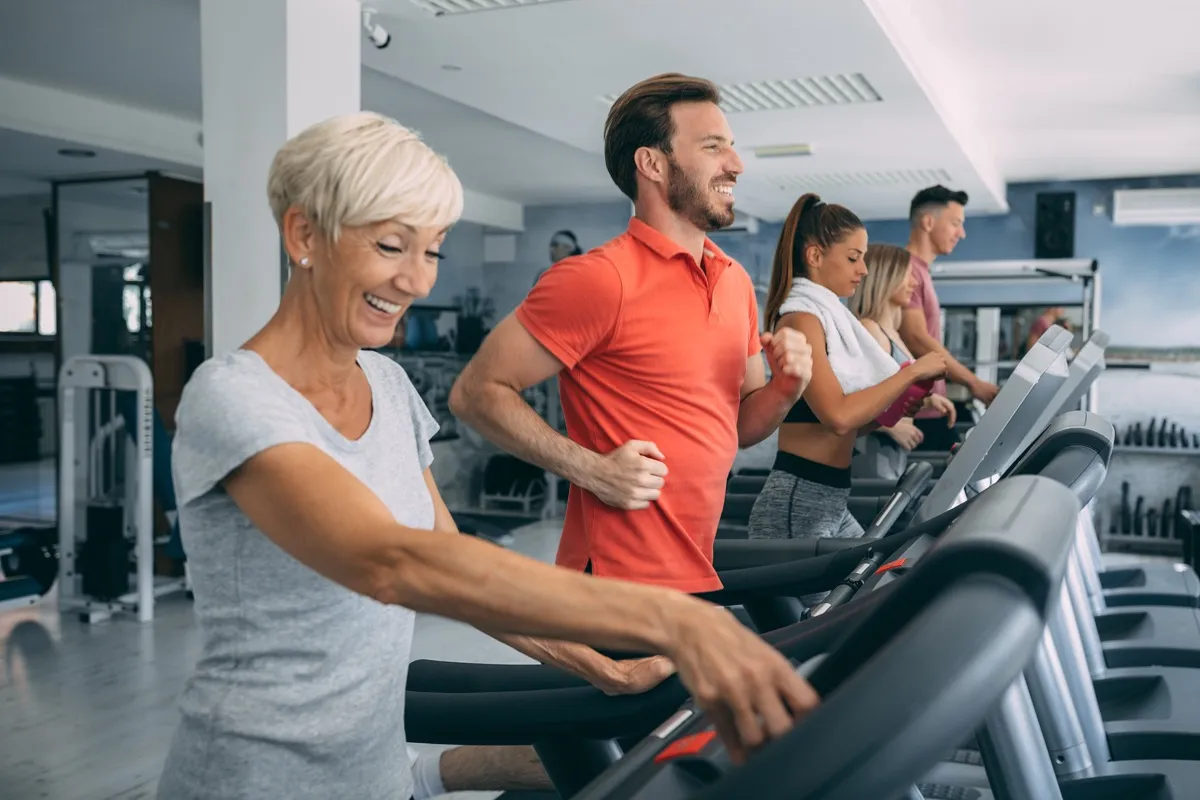
When you’re just beginning your journey to get in shape, it’s easy to get a little discouraged. Walking into a gym and being surrounded by a bunch of fitness buffs who already look like they’re in great shape can quickly make just about anyone feel self-conscious. The next time you experience a case of so-called “gym-timidation,” remember everyone starts somewhere—no one can lift heavy weights or run 10 miles on the treadmill without starting with small dumbbells and an out-of-breath first jog.
38
Try a fitness tracker.
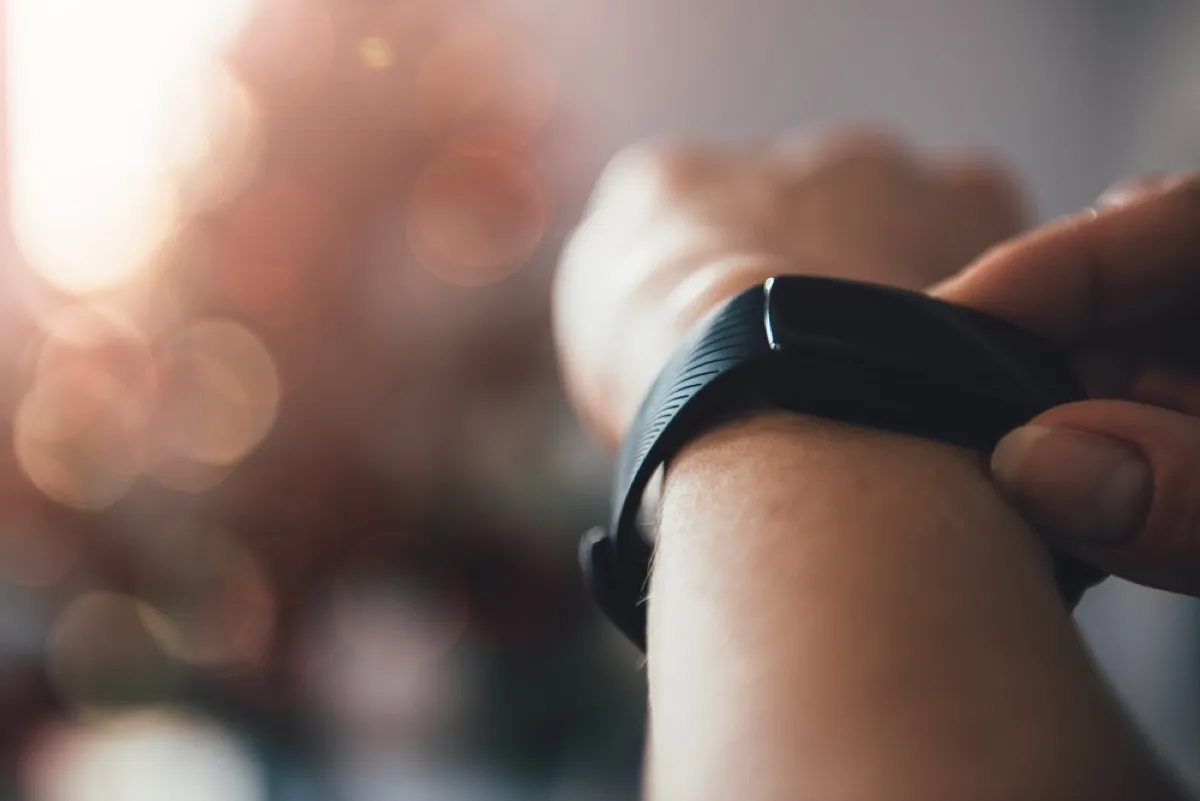
One of the best ways to motivate yourself to keep pushing through your workouts and reach your goals is to invest in a fitness tracker. They keep track of how many steps you’re taking each day—aim for around 10,000—as well as your heart rate, the number of calories you burn, and the amount of sleep you get.
39
Work with a trainer.
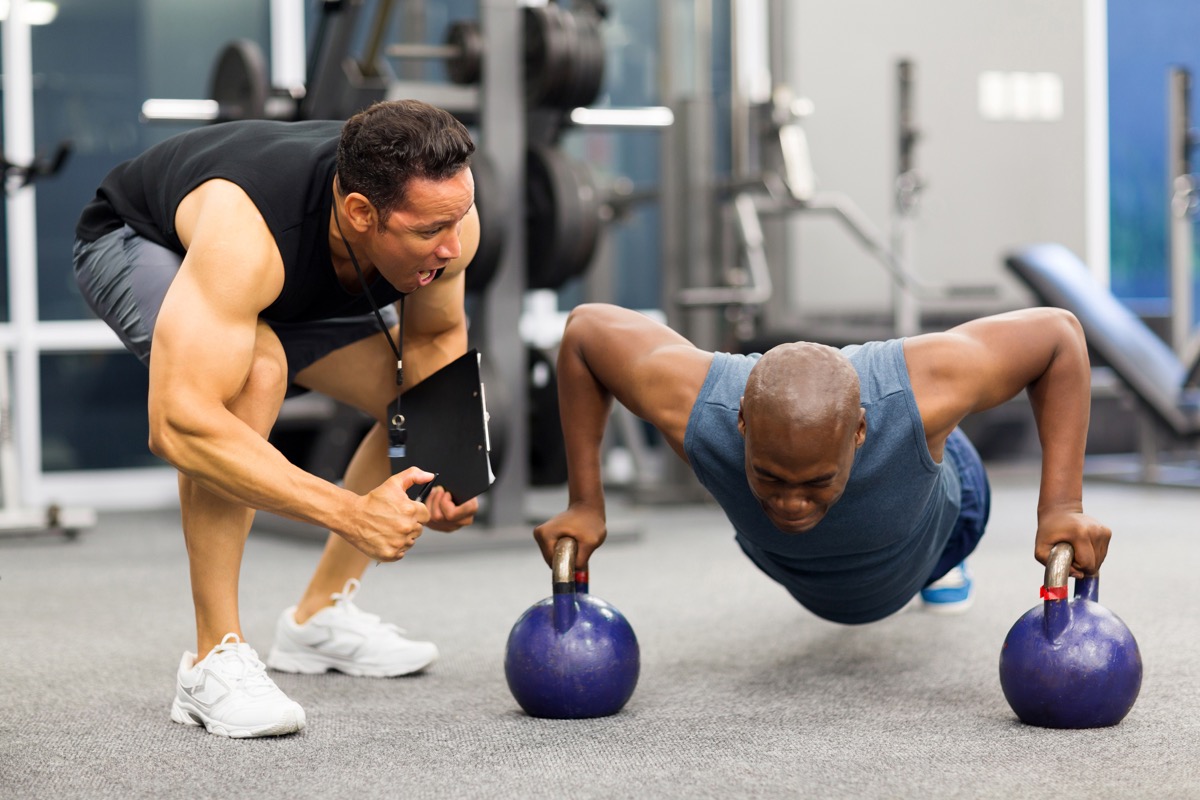
You might not feel like you know enough about fitness to throw yourself into a routine, and that’s completely normal. That’s exactly what personal trainers are for. Ask your friends and family for recommendations, then sign up for a consultation and initial workout with them, which is usually free of charge. And if you like that first session, consider sticking with them until you feel like you can manage on your own. You’ll get the support and motivation you need, and you’ll also have a plan that works for your body and specific needs.
40
Do at least one small thing to be more fit every day.

Staying fit in your 40s doesn’t just mean immediately signing up for the fanciest gym you can find. A lot of it has to do with those tiny changes you can make in your day-to-day life.
“Try to do something every day, even if it’s a long walk,” James says. “Making intentional, healthful actions helps keep us disciplined and helps influence other healthful actions throughout the day, too.”